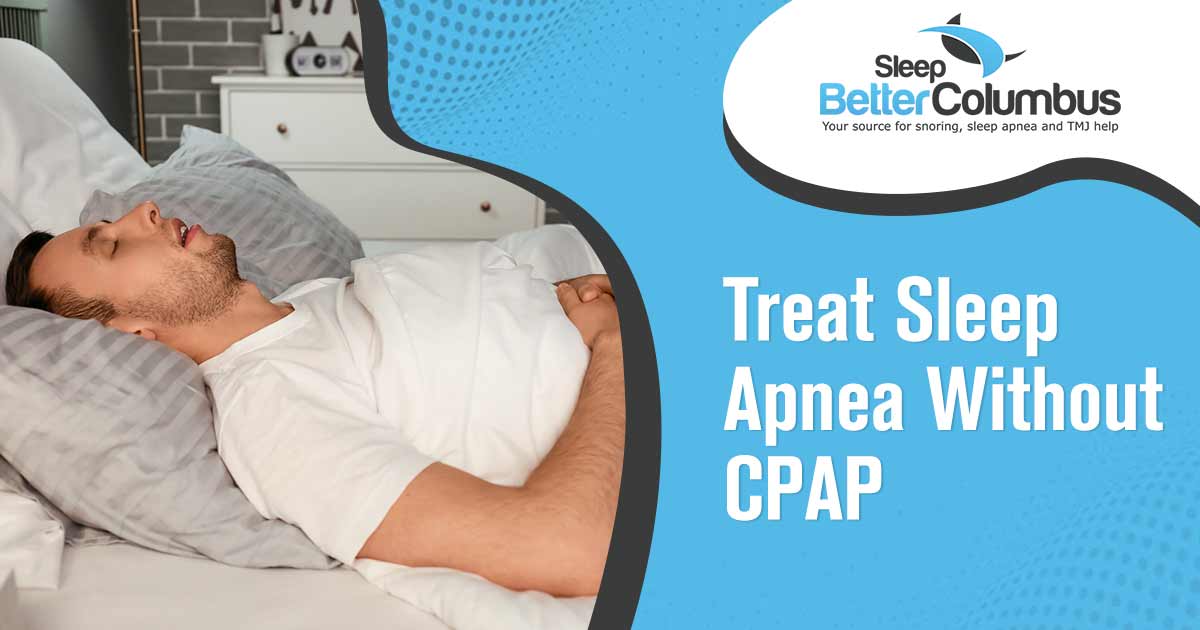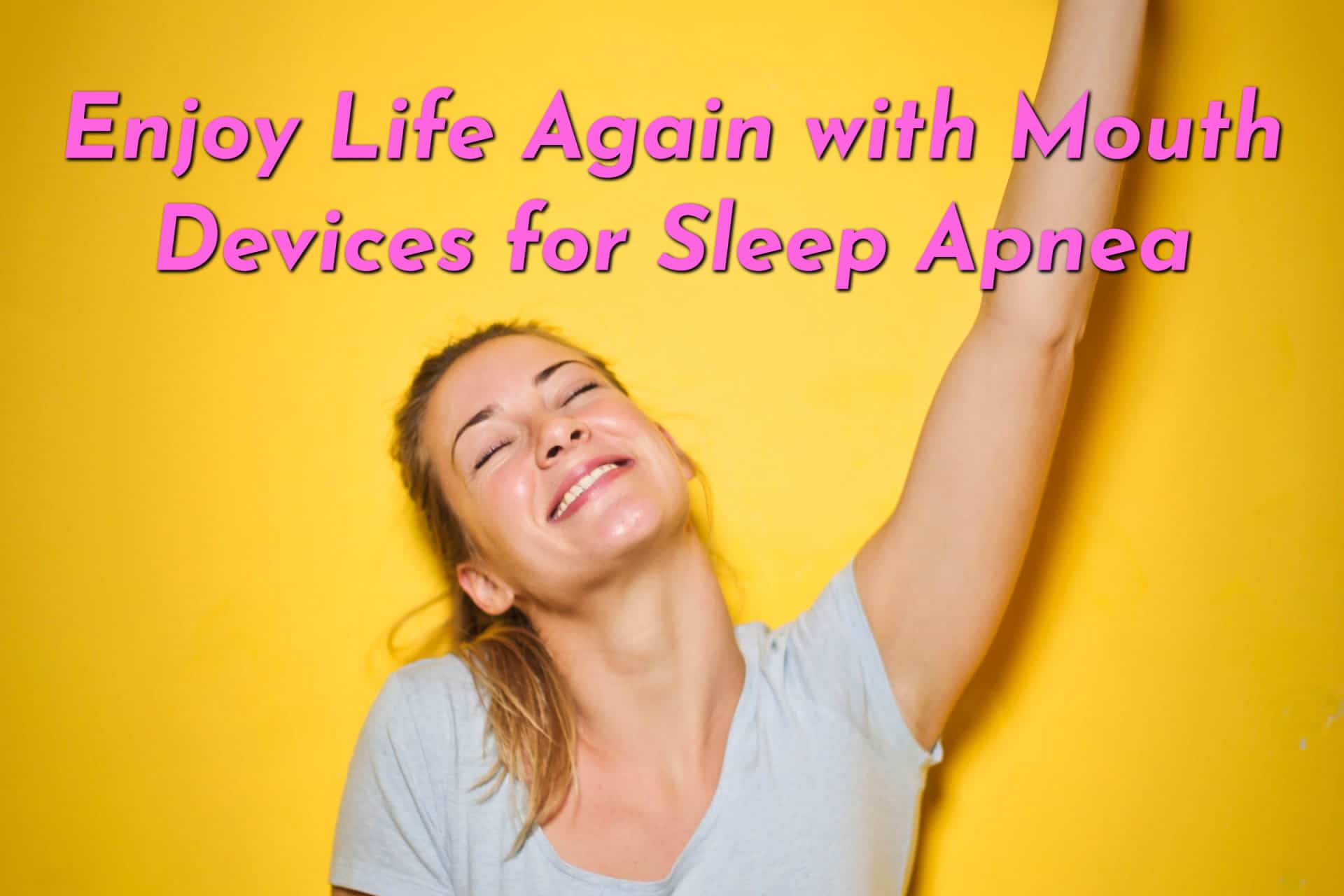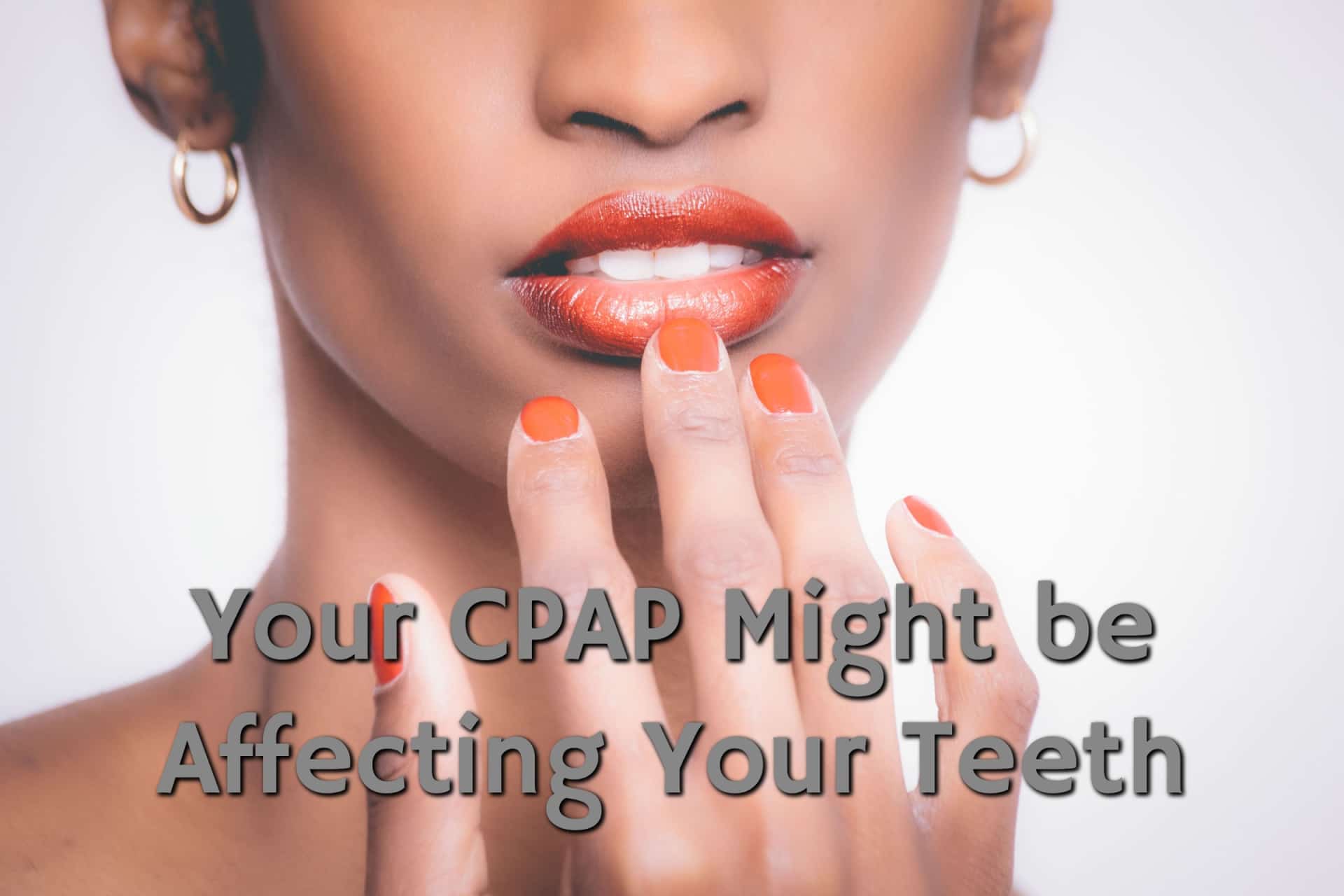CPAP therapy, or Continuous Positive Airway Pressure therapy, is commonly used as the first-line treatment for sleep apnea. CPAP therapy involves wearing a mask over the nose and/or mouth during sleep, which is connected to a machine that delivers a constant flow of air to keep the airway open.
While CPAP therapy has proven highly effective for many individuals with sleep apnea, it may not be the right choice for everyone. In such cases, it is important to explore alternative treatment options to ensure that the disorder is effectively managed.
What Is Sleep Apnea?
Sleep apnea is a common yet potentially serious sleep disorder that affects millions of people worldwide. It is characterized by repeated interruptions in breathing during sleep, leading to fragmented and poor-quality rest. These interruptions, known as apneas, can last for a few seconds to minutes and occur multiple times throughout the night. Sleep apnea can have various causes, including the relaxation of throat muscles, obesity, age, and certain medical conditions.
What Are CPAP Machines?
To mitigate the effects of sleep apnea and improve sleep quality, Continuous Positive Airway Pressure (CPAP) machines are often used as a treatment option. CPAP machines work by delivering a constant flow of air pressure through a mask that covers the nose or mouth, keeping the airways open and preventing interruptions in breathing. This steady airflow acts as a splint, ensuring that the air passages do not collapse during sleep and allowing for uninterrupted breathing.
CPAP machines not only help in reducing the frequency and severity of apneas but also provide several other benefits. Improved sleep quality can result in increased energy levels, enhanced cognitive function, and better overall health. CPAP therapy has also been found to reduce the risk of complications associated with untreated sleep apnea, such as high blood pressure, heart disease, and stroke.
Drawbacks of CPAP therapy
CPAP (continuous positive airway pressure) therapy is often regarded as the gold standard for treating obstructive sleep apnea. However, despite its effectiveness, there are drawbacks that may hinder some individuals from fully adhering to their OSA treatment plan.
One common problem faced by CPAP users is discomfort. Wearing a mask or nasal prongs with straps that fit snugly around the head can feel claustrophobic for some individuals, making it difficult to sleep comfortably. Additionally, the sound produced by the machine can cause disturbance, further impacting a person’s ability to get a good night’s sleep. Such discomfort may lead to non-compliance with therapy, as users may discontinue or avoid using the CPAP device altogether.
Many people also struggle with the adjustment period of CPAP therapy. It requires time and patience to become accustomed to the feeling of continuous positive airway pressure while sleeping. New users may experience nasal congestion, dryness, or excessive sneezing initially. These side effects can be temporary, but they can be discouraging for individuals who are not prepared or sufficiently educated on what to expect during the treatment. Moreover, being consistent with using the CPAP every night can also be challenging, especially during travel or when staying away from home, making adherence to therapy more difficult.
In addition to the discomfort and adjustment period, CPAP therapy may not be suitable for everyone due to certain factors. Some individuals may have an aversion to the idea of wearing a mask while sleeping or may have psychological barriers that prevent them from fully embracing the treatment. And individuals with underlying nasal or sinus problems, such as severe allergies or structural abnormalities, may find it difficult to tolerate the increased air pressure required for effective obstructive sleep apnea therapy. In such cases, alternative non CPAP sleep apnea treatment options like oral appliances should be considered.
While CPAP masks and machines have proven to be beneficial for millions of sleep apnea patients, it is essential to be aware of the potential drawbacks and challenges associated with its use. Thankfully, technology and sleep medicine have evolved to provide an alternative to CPAP machine treatment.
Who Might Benefit From CPAP Alternatives?
Individuals who struggle with poor compliance, discomfort, or other issues related to CPAP therapy may benefit from an alternative to CPAP machine therapy.
It is crucial to emphasize the importance of seeking an obstructive sleep apnea treatment option that the patient can follow consistently. Untreated or poorly managed sleep disorders can have severe consequences on overall health. Sleep apnea, for example, is associated with numerous health risks like high blood pressure, heart disease, heart failure, cognitive issues, stroke, and diabetes. Therefore, individuals who are unable to adhere to CPAP therapy should not disregard the significance of finding a suitable alternative to sleep apnea machine therapy.
Are Alternative Sleep Apnea Treatments Effective?
Oral appliances have emerged as a promising and effective alternative for treating mild to moderate cases of obstructive sleep apnea (OSA). This therapeutic option involves the use of specially designed devices that are worn in the mouth during sleep. These oral appliances work by repositioning the jaw, tongue, and supporting the palate soft tissue, thereby helping to maintain an open airway and reduce the occurrence of apnea episodes as well as snoring.
One of the key advantages of oral appliances is their non-invasive nature. Unlike other treatment options, such as continuous positive airway pressure (CPAP) machines, oral appliances do not require the use of masks or tubes. They can help treat sleep apnea without mask restrictions. This makes them comfortable and easy to use, ensuring that patients are more likely to comply with their treatment regimen. Additionally, oral appliances are portable and convenient, allowing individuals to use them not only at home but also while traveling.
Numerous scientific studies have highlighted the effectiveness of oral appliances in improving sleep quality and reducing the severity of sleep apnea. These appliances have been shown to significantly increase airflow, decrease the number of apnea and hypopnea events, and alleviate apnea symptoms such as snoring and excessive daytime sleepiness. As a result, patients experience improved sleep patterns, enhanced cognitive function, and a reduction in associated health risks, including cardiovascular issues.
It is important to note that the selection and fitting of oral appliances as alternatives to CPAP machine therapy should be done by qualified healthcare professionals with expertise in dental sleep medicine. They will ensure customization and proper adjustment of the device to suit the individual needs of each patient. Regular follow-ups and adjustments may also be necessary to ensure optimal comfort and ongoing effectiveness.
Alternatives to CPAP Therapy for Sleep Apnea
Oral appliances present a viable alternative for individuals with mild to moderate obstructive sleep apnea who are unable or unwilling to use CPAP machines. With their non-invasive nature, convenience, and proven efficacy, oral appliances offer an effective means to alleviate symptoms, improve sleep quality, and enhance overall well-being for those affected by this common diagnosis.
There are also a number of lifestyle changes that obstructive sleep apnea patients may use to help improve the condition. Often, a change in behavior can help reduce the apnea symptoms while also reducing the sleep debt and reversing health conditions related to obstructive sleep apnea. However, it’s important to understand that these changes alone may not be enough to treat the sleep disorder. It’s always recommended that if you think you suffer from sleep apnea that you speak with a health professional who is experienced in the treatment of sleep apnea.
Exercise
Regular exercise has been proven to have numerous health benefits, and one area in which it can be particularly beneficial is in reducing the symptoms of obstructive sleep apnea. Engaging in regular physical activity can help to alleviate these symptoms by improving cardiovascular health and promoting weight loss.
Exercising helps to strengthen the heart and lungs, allowing them to function more efficiently and reducing the strain on the cardiovascular system. This can lead to a significant improvement in breathing patterns during sleep, reducing the frequency and severity of apnea events. Additionally, exercise can aid in weight loss and weight management, as it increases calorie burn and helps to build lean muscle mass. Since excess weight can contribute to the development and progression of obstructive sleep apnea, shedding excess pounds can have a profound impact on reducing symptoms and improving overall sleep quality.
Furthermore, regular exercise can have a positive impact on overall sleep quality and duration. Engaging in physical activity promotes the release of endorphins, which can help to reduce stress and anxiety, leading to a more restful sleep. Exercise has also been shown to regulate and promote the natural sleep cycle, allowing individuals with obstructive sleep apnea to achieve a deeper and more restorative sleep. By incorporating a regular exercise routine into their lifestyle, individuals with obstructive sleep apnea can expect to experience a reduction in symptoms and an improvement in their overall quality of life.
Avoiding Alcohol
Adopting certain lifestyle changes, such as abstaining from alcohol and other substances, especially in the few hours prior to bed, can greatly benefit individuals diagnosed with sleep apnea.
Alcohol consumption has been shown to increase the severity of OSA symptoms. This is because alcohol acts as a depressant, causing the muscles in the throat and airway to relax excessively. When the muscles relax too much, it can lead to a collapse of the airway, resulting in interrupted sleep and breathing during the night. Additionally, alcohol can disrupt the normal sleep patterns and cycles, making it harder for individuals with sleep apnea to achieve restful sleep.
Positional Therapy
Positional therapy refers to a non-invasive approach that helps alleviate the symptoms associated with obstructive sleep apnea (OSA). This therapy method involves encouraging individuals to maintain a specific sleeping position. By encouraging a specific sleeping position, positional therapy aims to reduce airway blockage and improve the overall quality of sleep for individuals suffering from OSA.
Numerous studies have shown that adopting a side sleeping position can significantly decrease the number of apnea episodes and improve oxygen saturation levels and snoring during sleep. Sleeping on the back, on the other hand, often worsens the symptoms of OSA as it allows the tongue and soft tissues of the throat to obstruct the airway. Positional therapy methods aim to discourage sleeping on the back and promote side sleeping, either naturally or with the help of specialized devices like positional pillows or tennis balls attached to the back of a sleep shirt.
The effectiveness of positional therapy varies among individuals, and it may not be a suitable standalone treatment for severe cases of OSA. However, for those with positional OSA, where the apnea events predominantly occur during back sleeping, positional therapy can be an effective and non-invasive option to enhance sleep quality. It is important to consult with a healthcare professional to determine the most appropriate treatment plan for addressing OSA symptoms, which may include positional therapy in combination with other interventions such as continuous positive airway pressure (CPAP) devices or oral appliances.
Oral Appliances
Numerous studies have demonstrated the efficacy of oral appliances in treating OSA. In fact, the American Academy of Sleep Medicine now recognizes oral appliances as a first-line treatment option for mild to moderate OSA and an alternative for patients with severe OSA who are unable to tolerate continuous positive airway pressure (CPAP) therapy. Oral appliances have been shown to effectively reduce the frequency and duration of apnea episodes, improve oxygen levels, and promote deeper, more restful sleep.
Sleep Apnea Mouth Guards
What makes oral appliances particularly appealing to many patients is their non-invasive nature and relative comfort compared to other treatment options. Unlike CPAP therapy, which involves wearing a mask and being hooked up to a machine that delivers pressurized air, oral appliances are discreet, portable, and easy to use. They allow for natural jaw movement and do not require external power sources, making them a convenient choice for those who travel frequently or have an active lifestyle.
It is important to note that the use of oral appliances should be recommended and monitored by a qualified sleep specialist or dentist trained in dental sleep medicine. Each patient’s condition is unique, and an individualized approach is necessary to determine the most appropriate appliance and treatment plan. With proper selection and adherence, oral appliances can yield significant improvements in sleep quality and overall well-being for individuals suffering from OSA, offering them a potential path to a healthier, more rejuvenating night’s rest.
Mandibular Advancement Devices
A mandibular advancement device (MAD) is a custom-made oral appliance that resembles a mouthguard and is worn during sleep. Its primary function is to position the lower jaw or mandible forward, which helps to keep the airway open and prevents it from collapsing. This mechanism effectively minimizes instances of obstruction and facilitates uninterrupted breathing.
By utilizing a MAD, patients can experience several benefits. Firstly, it reduces snoring, a common symptom of obstructive sleep apnea that often affects both the individual and their bed partner’s sleep quality. Secondly, a MAD improves the airflow and oxygen supply, reducing the frequency and severity of apnea episodes. Lastly, it promotes better sleep and breathing, ensuring a more refreshed and rejuvenated state upon waking.
The best mandibular advancement device can be a game-changer for individuals suffering from OSA.
Tongue Retaining Devices
Tongue retaining devices are oral appliances used to treat osa
Tongue retaining devices (TRDs) are oral appliances that have been specifically designed to address obstructive sleep apnea (OSA). TRDs work by holding the tongue in a forward position, preventing it from falling back and obstructing the airway during sleep.
These devices are generally made of a soft, flexible material and are custom-fitted to an individual’s mouth. They are worn during sleep and are effective in treating mild to moderate cases of OSA. TRDs are great alternatives to CPAP mask therapy.
How to Get an Oral Appliance for Sleep Apnea
A sleep specialist, dentist, or other health professional who specializes in treating obstructive sleep apnea can be a valuable resource when it comes to getting an oral appliance for your diagnosis. These professionals are highly trained and experienced in understanding the intricacies of OSA and its treatment options.
Seeking the help of a sleep specialist is crucial in obtaining an oral appliance. They will conduct a comprehensive evaluation to determine the severity of your sleep apnea and assess whether an oral appliance is the appropriate treatment option for you. They will also take into consideration any other medical conditions you may have and tailor the treatment plan accordingly.
Once the diagnosis is confirmed, the sleep specialist will guide you through the process of obtaining an oral appliance. They will work closely with you to choose the most suitable device based on your specific needs and preferences. They will ensure that the appliance is properly fitted and provide instructions on how to use and maintain it effectively.
Partnering with an experienced health professional with a meical specialty in treating obstructive sleep apnea can significantly enhance your treatment journey. Their expertise and guidance will help you navigate the complexities of managing sleep apnea, allowing you to achieve a better quality of sleep and improve your overall health and well-being.
Sleep Better Columbus Offers New CPAP Alternatives
Sleep Better Columbus is a trusted sleep apnea clinic dedicated to providing effective treatments for obstructive sleep apnea (OSA). With a team of highly trained professionals, they have successfully helped numerous patients overcome OSA without relying on continuous positive airway pressure (CPAP) machines. These specialists understand the unique challenges faced by OSA patients and believe in taking a personalized approach to treatment.
At Sleep Better Columbus, patients receive comprehensive consultations to understand their specific needs and concerns. The experienced sleep specialists conduct thorough assessments to determine the underlying causes and severity of their OSA. Based on these findings, they develop customized treatment plans that are tailored to suit individual requirements.
Located in Columbus, Ohio, Sleep Better Columbus is conveniently accessible to individuals in the area. Patients can easily reach out to these specialists for a consultation and take the first step towards effective OSA treatment. With their years of experience and commitment to patient care, Sleep Better Columbus is the go-to healthcare facility for individuals seeking non-CPAP solutions for their sleep apnea condition. Don’t let sleep apnea disrupt your life any longer – contact Sleep Better Columbus and discover the treatment options that best suit your needs.




